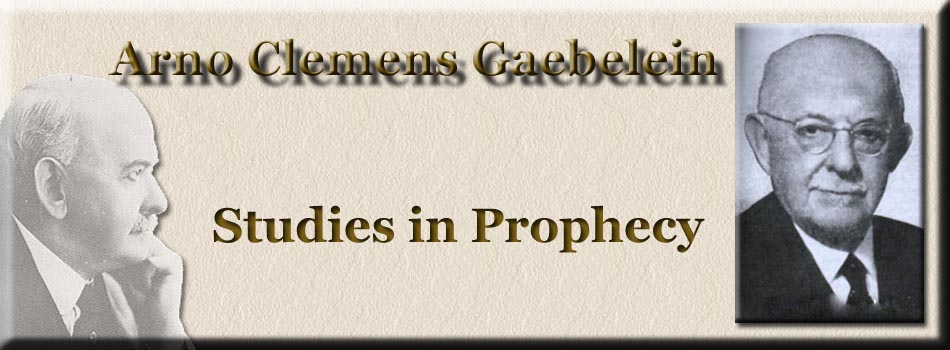
The Prophet Joel
By Arno Clement Gaebelein
Appendix A
REASONS FOR THE EARLY DATE OF JOEL.
One of the recent commentators of the Book of Joel1 gives seven reasons for making Joel the oldest of the Prophets.
1. Joel charges the Philistines with having invaded Judah, captured the inhabitants, and sold them as slaves. Now according to 2 Chron. xxi:10, this happened under Joram, B. C. 889-883. And they suffered the punishment predicted for their crime, under Uzziah, 2 Chron. xxvi:6. Hence Joel could not have written this book before B. C. 889, nor later than 732.
2. The Phoenicians, i. e., those of Tyre and Sidon, who in the days of David and Solomon were the allies, had in later times become the enemies of Judah. They too had been guilty of selling Jewish prisoners to the Grecians. Joel predicts that they also shall be punished for this crime, a prediction fulfilled in the time of Uzziah, B. C. 811-759. This proves that Joel must have prophesied before the days of Uzziah.
3. The Edomites (iii:19), are ranked among the enemies of Judah. They came from the same stock as the Jews, and on account of their sin against their brethren, their country was to become a perpetual desolation. From
2 Kings viii:20, comp. with 2 Chron. xxi:8, we learn that they became independent of Judah in the time of Joram, B. C. 889-883. They were again subdued, and their capital city Petra captured, B. C. 838-811, though the southern and eastern parts of their territory were not conquered until the reign of Uzziah, about B. C. 830. The prophet must have exercised his ministry, therefore, prior to the latter date.
4. The fact that no mention is made of the invasion by the Syrians of Damascus, proves that Joel was one of the early prophets. This occurred in the latter part of the reign of Joash, B. C. 850-840.
5. The high antiquity of Joel is proved by the fact that he makes no reference to the Assyrian invasion of the two Jewish kingdoms in B. C 790. On the other hand, Amos clearly alludes to it (vi:14).
6. Another proof is derived from the relation between Joel and Amos. The latter was certainly well acquainted with the writings of the former.
7. The mention of the Valley of Jehoshaphat is a circumstance leading to the same conclusion. It took this name from the memorable victory there gained over Moab and Ammon. The way in which Joel refers to it shows that this event must have been a comparatively recent one, and that the memory of it was still fresh.
On these grounds we conclude that in fixing the time of this prophet, we cannot take for our terminus a quo an earlier date than B. C. 890, nor for our terminus ad quern a later one than 840. It most probably falls between B. C. 860-850. Joel therefore is the oldest of the Minor Prophets.
![]()
1. Dr. August Wunsche:Die Weissagungen des Propheten Joel. Leipzig, 1872.
-
Site Navigation
 Home
Home What's New
What's New Bible
Bible Photos
Photos Hiking
Hiking E-Books
E-Books Genealogy
Genealogy Profile
Free Plug-ins You May Need
Profile
Free Plug-ins You May Need
 Get Java
Get Java.png) Get Flash
Get Flash Get 7-Zip
Get 7-Zip Get Acrobat Reader
Get Acrobat Reader Get TheWORD
Get TheWORD